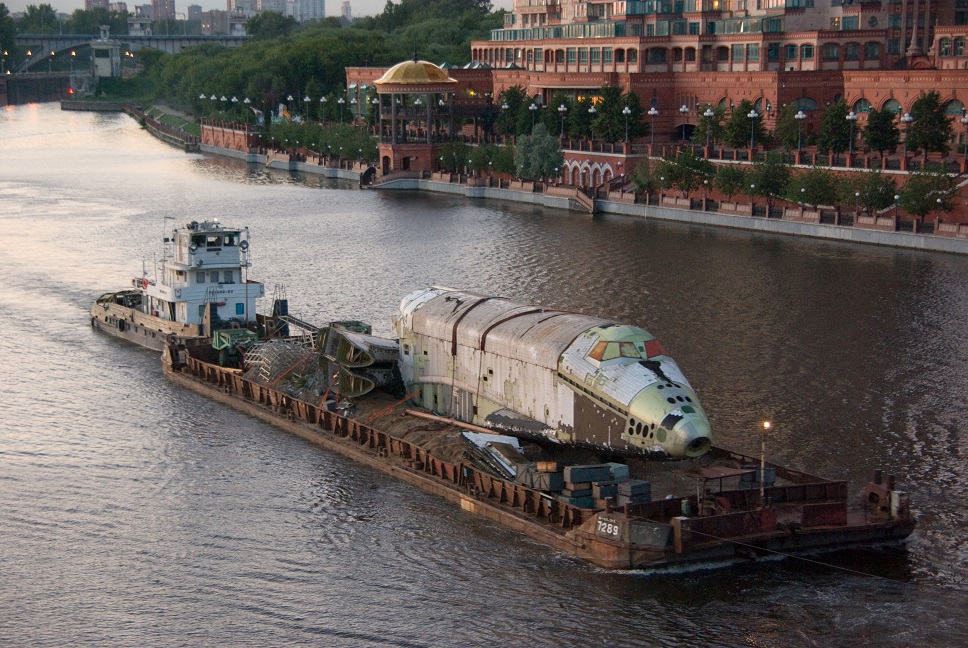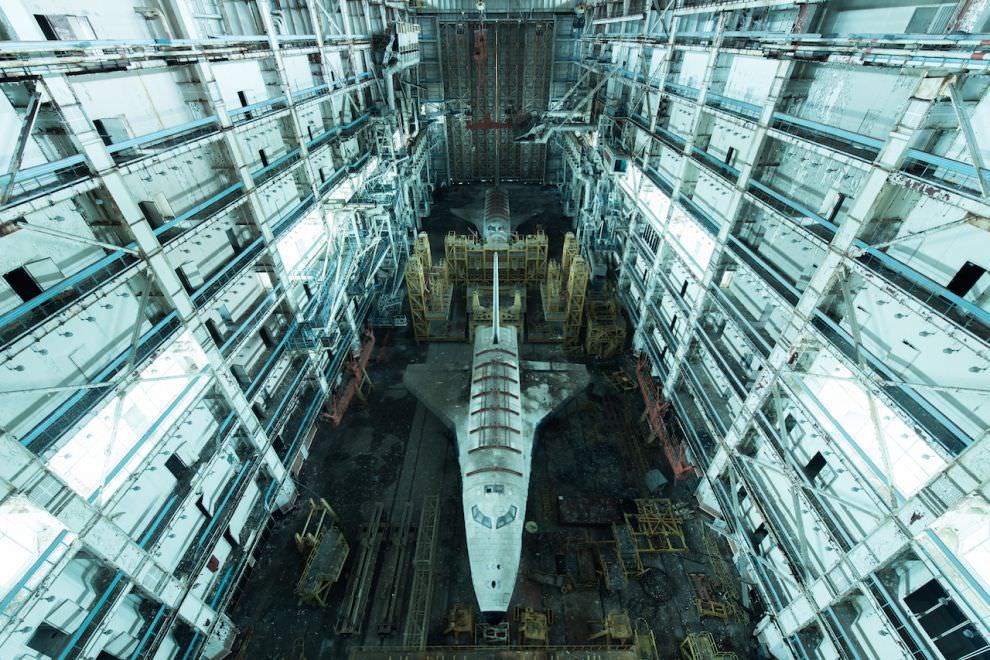

No one was hurt and both the ship and vehicle seemed to suffer only minor damage. The journey got off to an inauspicious start when, during the transfer from the storage barge to the ship, there was a failure of the aft spreader (part of the lifting mechanism) and the tail of the vehicle dropped from just above deck height to the bottom of the hold. On 4 March 2008 the OK-GLI began its journey by sea to the Technik Museum Speyer where it was refurbished and serves as a walk-in exhibit. Due to legal issues, it remained in Bahrain for several years, pending settlement of an international court case over fees. It was then bought by the Sinsheim Auto & Technik Museum, to be transported to Germany in 2005. In September 2004 a team of German journalists found the OK-GLI in Bahrain, having been abandoned after it was on display as an attraction of the 2002 "Bahrain Summer" festival. The OK-GLI was then offered for sale, including by a radio auction on the American News 980 KFWB-AM with a starting price of US$6 million, however it did not receive any genuine bids. The owners went into bankruptcy after the Olympics, and the vehicle was moved into the open air and stored for a year in a fenced-in parking lot and protected by nothing more than a large tarpaulin, where it suffered deterioration and repeated vandalism. Visitors could walk around and inside the vehicle (a walkway was built along the cargo bay), and plans were in place for a tour of various cities in Australia and Asia. Upon reassembly, the OK-GLI was put on display in a temporary enclosure for the 2000 Summer Olympics in Sydney. It was disassembled and transported by ship to Sydney, Australia, via Gothenburg, Sweden arriving on 9 February 2000 and appeared as a static tourist attraction under a large temporary structure in Darling Harbour for a few years. In 2000, the OK-GLI was sold to an Australian company called the Buran Space Corporation, owned by Australian astronaut Paul Scully-Power. Post-retirement Zhukovsky Air Base Īfter the program was cancelled, the OK-GLI was stored at Gromov Flight Research Institute, near Moscow, where it was displayed during the annual MAKS air show. All tests and flights were carried out at the Zhukovsky Air Base, outside Moscow.įirst automatic landing Rimantas Stankevičius, Igor Volk In total, nine taxi tests and twenty-five test flights of the OK-GLI were performed, after which the vehicle was "worn out". They were: Ivan Bachurin, Alexei Borodai, Anatoli Levchenko, Aleksandr Shchukin, Rimantas Stankevičius, Igor Volk and Viktor Zabolotsky. All had experience as test pilots and flew on the OK-GLI test vehicle. Until the end of the Soviet Union in 1991, seven cosmonauts were allocated to the Buran programme. Test flights Buran flight test Orbiter OK-GLI This provided invaluable information about the handling characteristics of the Buran design, and significantly differed from the carrier plane/air drop method used by the US and the Enterprise test craft. The jets were used to take off from a normal landing strip, and once it reached a designated point, the engines were cut and the OK-GLI glided back to land. This Buran could take off under its own power for flight tests, in contrast to the American Enterprise test vehicle, which was entirely unpowered and relied on an air launch. It was fitted with four AL-31 jet engines mounted at the rear (the fuel tank for the engines occupied a quarter of the cargo bay). The OK-GLI (Buran Analog BST-02) test vehicle ("Buran aerodynamic analogue") was constructed in 1984. As the project progressed, five additional scale-model flights were performed. The first suborbital test flight of a scale-model took place as early as July 1983. The construction of the orbiters began in 1980, and by 1984 the first full-scale Buran was rolled out.

The development of the Buran began in the late 1970s as a response to the U.S.

It is now an exhibit at the Technik Museum Speyer in Germany. It was constructed in 1984, and was used for 25 test flights between 19 before being retired. The OK-GLI ( Russian: Орбитальный корабль для горизонтальных лётных испытаний, ОК-ГЛИ, romanized: Orbital'nyy korabl' dlya gorizontal'nykh lotnykh ispytaniy, lit.'Orbital ship for horizontal flight tests'), also known as Buran Analog BTS-02 ( Russian: БТС-02, Большой транспортный самолёт второй, romanized: bolshoi transportny samolyot vtoroi, lit.'big transport aircraft, the second'), was a test vehicle ("Buran aerodynamic analogue") in the Buran programme. Atmospheric Buran testbed currently on display in Technik Museum Speyer


 0 kommentar(er)
0 kommentar(er)
